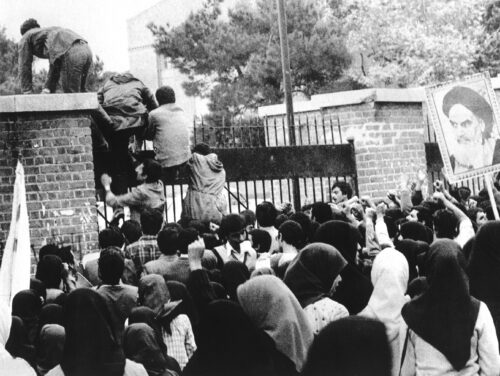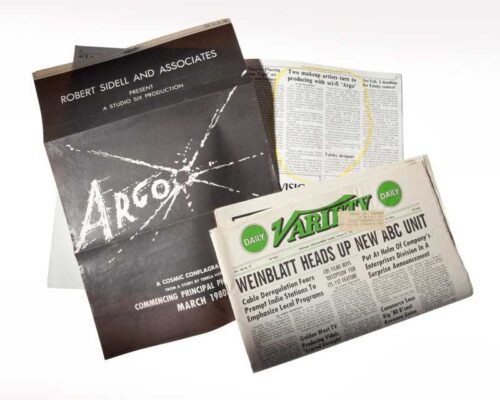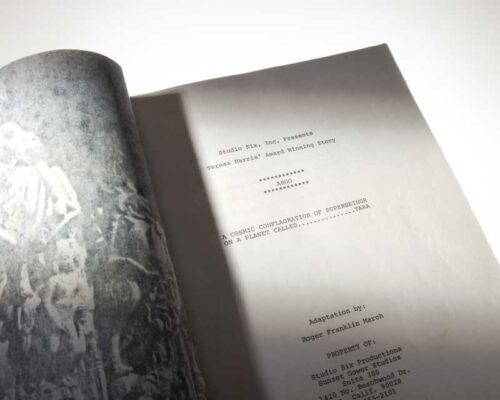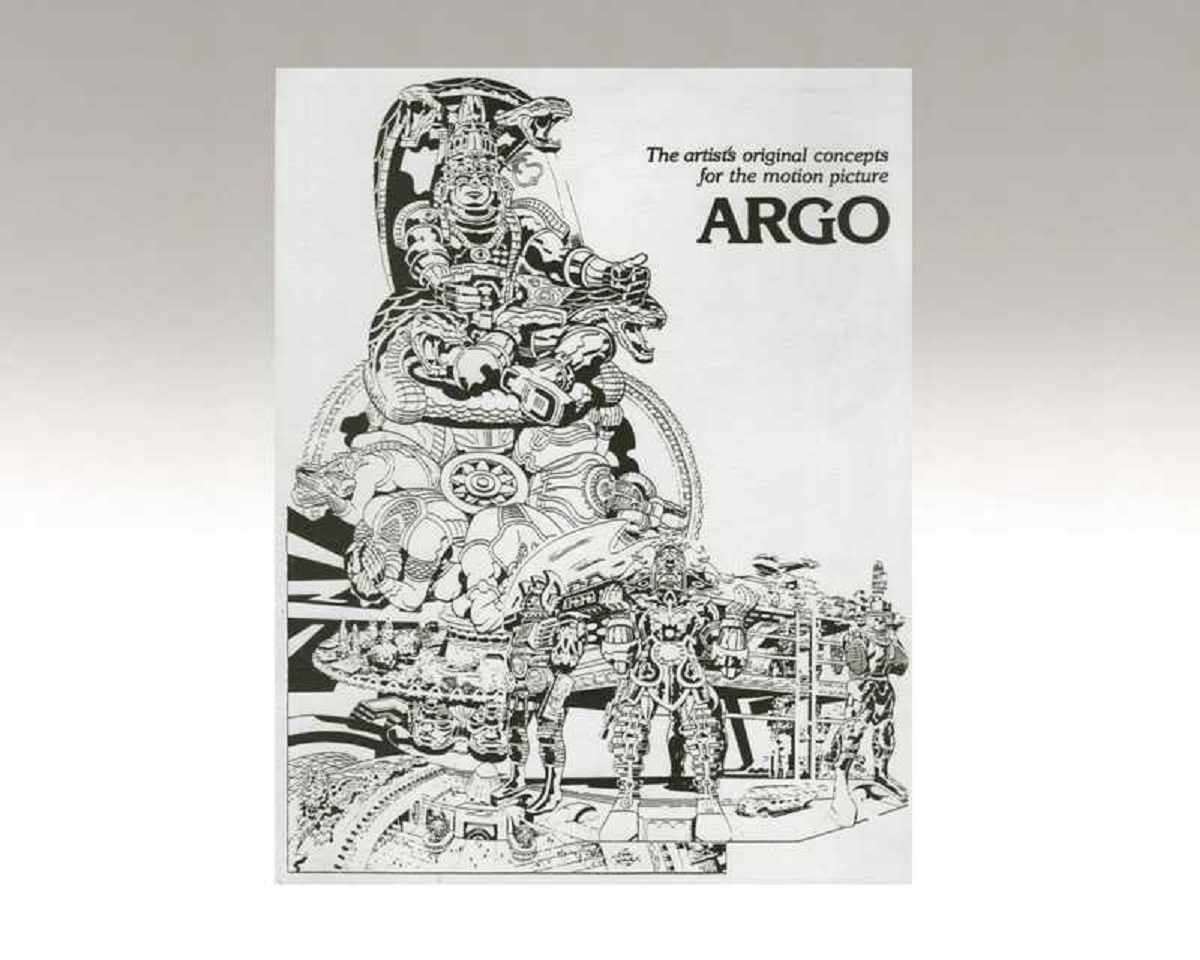CIA technical specialists created a fake movie-production company to rescue six American diplomats in Tehran, Iran. Photo: Central Intelligence Agency.
Every intelligence agency is ultimately judged on its ability to successfully rescue people and bring them out of harm’s way, which is essentially what an exfiltration is.” ― Antonio J. Mendez, Argo: How the CIA & Hollywood Pulled Off the Most Audacious Rescue in History.
The ‘Argo’ rescue mission was a covert operation that took place in the aftermath of the Iranian Revolution of 1979, when a group of Iranian militants stormed the US embassy in Tehran and took 52 American diplomats and citizens hostage. The crisis lasted for 444 days and strained the relations between the US and Iran. The hostages were finally freed on 20 January 1981, minutes after Ronald Reagan was inaugurated as the 40th president of the United States, following a series of negotiations and a failed rescue attempt by the US military.

Six diplomats, Robert G. Anders, Mark J. Lijek, Cora A. Lijek, Henry L. Schatz, Joseph D. Stafford, and Kathleen F. Stafford, were working in the consulate, a separate building in the embassy compound, when the Iranian militants stormed the US embassy. They managed to evade capture and fled into Tehran’s streets with orders to walk to the British Embassy. However, they found it surrounded by protesters and had to seek refuge elsewhere. They contacted their Canadian counterparts and were sheltered by Canadian Ambassador Ken Taylor and his deputy John Sheardown at their residences. They stayed there for almost three months,
The US Central Intelligence Agency (CIA), with the help of the Canadian government, devised a plan to smuggle them out of the country by disguising them as a Canadian film crew working on a sci-fi movie called ‘Argo’. Tony Mendez, a CIA officer who was a disguise and forgery specialist, came up with the idea of using the movie as a cover story. He created a fake Hollywood production company called Studio Six and bought the rights to a sci-fi script called ‘Argo’. He also placed ads and articles in Variety magazine to make the movie seem real.

The CIA officers created fake identities and documents for the diplomats with the help of the Canadian government, who issued six fake passports for them. This required a secret act of the Canadian Parliament, which agreed to cooperate with the CIA in the operation. The officers also created fake biographies and backgrounds for the diplomats that matched their roles as a film crew and their Canadian passports. They used aliases, dates of birth, and places of origin that were plausible and consistent. They also used photos that were taken in Iran to make the passports look more authentic. The officers smuggled the fake passports and other documents into Iran via diplomatic pouch, a secure method of transporting official materials between countries. The documents included fake visas, airline tickets, business cards, and letters of invitation from Studio Six, the fake Hollywood production company that was supposed to be making ‘Argo’. The documents were designed to withstand scrutiny by the Iranian authorities and to convince them that the diplomats were legitimate visitors.
Mendez flew to Tehran under the name of Kevin Harkins, a producer, and met with Ed Johnson, another CIA officer who was posing as a location scout. Johnson’s name was made public in September 2023, 43 years after the Argo rescue mission. He also spoke German, which helped him and Tony Mendez, another CIA officer who was previously identified, get a taxi to the Canadian embassy when they arrived in Tehran. Johnson’s identity was disclosed by the CIA as part of the season finale of The Langley Files podcast, a series that reveals declassified stories from the agency’s history. The CIA said that Johnson had given his consent to reveal his name and role in the operation, and that he was proud of his service and contribution to the mission.
Mendez and Johnson met with the diplomats at the Canadian ambassador’s residence. The CIA officers explained to the diplomats the basics of filmmaking, such as the different types of shots, angles, and lighting. They also told them about the movie they were supposed to be working on, ‘Argo’, a sci-fi thriller set in the Middle East. They assigned them roles such as director, producer, cinematographer, and production designer. They gave them fake names and biographies that matched their roles and their Canadian passports. They also gave them examples of movies that they could mention as references or inspirations. The crash course was meant to prepare them for any possible questions or suspicions that they might encounter at the airport or elsewhere. Mendez escorted the diplomats to the airport and boarded the flight to Zurich with them.

The operation was successful, and the group escaped from Iran in January 1980.The Canadian government played a major role in the rescue and was praised by both the American government and the public for its courage and assistance. The story of the ‘Argo’ rescue mission and Mendez’s role in it was later made into a 2012 Oscar® winning film ‘Argo’ starring Ben Affleck as Mendez.
CIA officer Johnson’s name was made public in September 2023, 43 years after the Argo rescue mission. He also spoke German, which helped him and Tony Mendez, another CIA officer who was previously identified, get a taxi to the Canadian embassy when they arrived in Tehran. Johnson’s identity was disclosed by the CIA as part of the season finale of The Langley Files podcast, a series that reveals declassified stories from the agency’s history. The CIA said that Johnson had given his consent to reveal his name and role in the operation, and that he was proud of his service and contribution to the mission.
The Langley Files
The Langley Files podcast is a series that reveals declassified stories from the CIA’s history. It is the first public podcast by the CIA, and it aims to educate and connect with the general public, sharing insight into the agency’s core mission, capabilities, and agility as an intelligence leader. The podcast is hosted by Dee and Walter, two CIA officers who guide the listeners around the corridors of CIA Headquarters in Langley, Virginia. They interview former and current CIA officers, analysts, scientists, and experts who share their personal experiences and perspectives on various topics related to the CIA’s work. Some of the episodes include stories about CIA’s disguise experts, CIA’s role in the hunt for Osama bin Laden, CIA’s contributions to modern technology, and CIA’s wellness initiatives. The podcast also features artifacts from the CIA Museum that illustrate the agency’s history and culture. The podcast is available on various platforms, such as Apple Podcasts, Spotify, Google Podcasts, and Stitcher.
Source
The Langley Files — CIA
CIA.gov
*The views and opinions expressed on this website are solely those of the original authors and contributors. These views and opinions do not necessarily represent those of Spotter Up Magazine, the administrative staff, and/or any/all contributors to this site.

